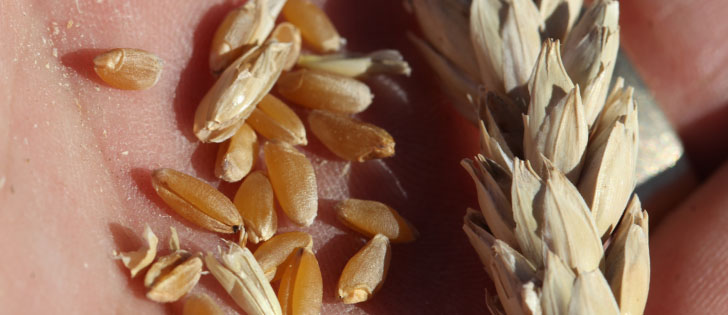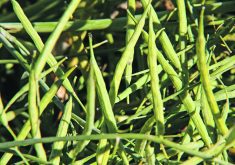ST. ALBERT, Alta. – Plant breeder Igor Falak can’t help but smile as he looks out over clubroot’s canola ground zero.
But as he does so, Falak makes sure he stays out of the well-podded canola crop, not only because it would be tricky to walk through but also because the dirt is well laden with clubroot spores.
No one wants to track that soil around with them.
“You see it; it’s a big crop of canola,” said the Pioneer Hi-Bred plant breeder from Ontario.
Read Also

August rain welcome, but offered limited relief
Increased precipitation in August aids farmers prior to harvest in southern prairies of Canada.
“It’s heavily infected soil. It’s genetic resistance in a very good canola.”
Falak is responsible for the first hybrid canola that is resistant to clubroot.
More than 250 infected fields have been identified in Alberta, but the disease is present in far more, lingering at low levels or waiting to be triggered by root ooze from a brassica plant.
The field Falak was visiting had been planted, with municipal approval, to a new, clubroot-resistant hybrid canola.
Falak developed the crop with help from Steven Strelkov of the University of Alberta and Murray Hartman of the provincial government. Together, they identified the clubroot strain and found resistant genetics to work into the canola.
“We started in 2003 when clubroot was found,” said Dave Charne, Falak’s boss at Pioneer Hi-bred. “Igor had experience with it in Europe. The result is Igor was able to adapt (the resistant genetics) into an elite (canola line) that is high yielding, has high oil content and some great agronomic features … and we got lucky, which is part of plant breeding.”
During the recent field tour near St. Albert in Sturgeon County, Falak held a wild mustard plant freshly pulled from the ground at the field’s edge and pointed to a stout set of clubroot nodules on the roots. Even if the weed had been left in the crop, it would not survive to make much seed.
He held up the roots in the late August sun and compared it to a resistant Pioneer 45H29 plant with normal root development. It was plucked from the soil next to the mustard.
“If a susceptible canola was here, it would be heavily infected,” he said.
“It wouldn’t be here right now really, as the weed likely germinated a month after the canola was seeded and the clubroot would have starved it to death by now.”
The disease infects all brassicas, including weeds. Only a few plants can survive when under attack by the fungus.
“It’s a pretty good day as a plant breeder when you can, in less than seven years, stand in front of a farmer’s field that couldn’t grow a canola crop and see your hybrid flourishing there,” Falak said.
“Next year, other companies will follow with more resistant genetics in their elite lines. And we’ll be moving into new resistance from other resistant (vegetable) brassicas. This is what good genetics research delivers to farmers – choices.”
Falak smiles more broadly as he talks about a day that he insists is not too far into the future when clubroot resistance will be a standard canola trait, just like blackleg resistance is today.
“Farmers will need to look after their rotations (of crops),” he said.
“Plant breeders will look after coming up with genetic solutions and we can put this disease threat behind us.”














